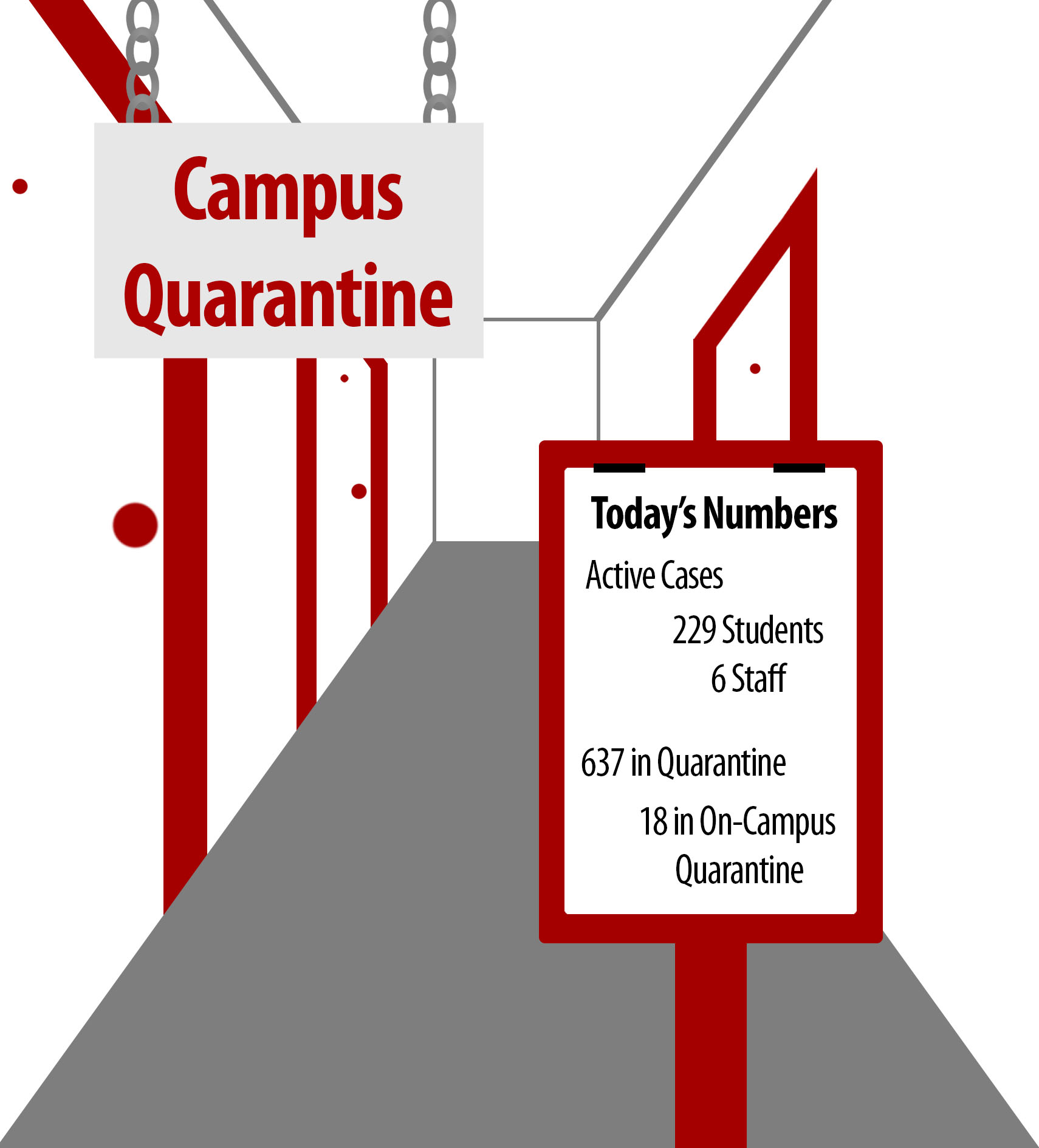
University Housing offers alternative on-campus living options
While the hallways of North Complex are usually full of students socializing, this semester, on-campus housing looks a little different. From campus-wide mask-wearing to isolation housing, there are many new rules and regulations in place to keep students in on-campus housing safe this semester.
Unlike previous years, move-in weekend was spread over three days with no volunteers. Additionally, students living in North Complex and other on-campus housing are required to wear masks everywhere in the facilities, except their personal rooms. They are also expected to social distance whenever possible.
Cody Burggraff, assistant director of University Housing, said even with the extra precautions in place due to COVID-19, there is still a sizable amount of students on campus.
“The numbers stay pretty strong to where we were last year. I think that speaks to students needing and wanting social interaction,” Burggraff said. “And we’re happy to hopefully be able to provide some of that, but obviously following CDC guidelines.”
Another new addition to housing this semester is isolation housing. Normally, all floors of each dorm building would be full. Due to the pandemic, there are floors set aside for residents in the event they test positive for COVID-19 and have to be isolated.
If a student is concerned that they might have been exposed to COVID-19, Burggraff said University Housing’s first recommendation is to call Student Health and determine whether they need to get tested or not.
“We are not medical experts, but we will do everything we can once we get advice from Student Health,” Burggraff said. “Going into isolation or quarantine is not a choice that a student needs to make. It’s based on recommendations from Student Health and the Department of Health.”
Until the student gets their test results back, they may choose to be sent to alternative housing to self-quarantine, but they only need to be in full isolation if they actually become ill. Burggraff said it’s up to the student whether they want to isolate on campus, or return to their hometown for the CDC recommended 10 to 14 days.
“Some students are choosing to go home because when you isolate here, you can’t really go outside or anything,” Burggraff said. “So some students want to branch out a little bit if they go home, but we want to keep our students safe here. So we’re allowing that with our quarantine spaces and isolation spaces.”
Because some students have chosen to go home to quarantine instead of remaining on campus, there is still isolation space available in the residence halls. In the event that these facilities fill up, there will be alternative accommodations available for students, Kate Fitzgerald, director of University Housing, said.
“We believe we have enough space — but if we run out we will utilize hotels,” Fitzgerald said.
Along with where to accommodate students, there is also the question of whether or not campus will close again. Due to the ever-changing nature of the pandemic, Fitzgerald said it’s hard to know the likelihood of this happening, but Housing is prepared.
“We certainly hope this does not happen,” Fitzgerald said. “If we all take precautions we should as a community be able to stay here as planned.”
In the meantime, Burgraff said he advises all students, faculty and staff on campus to do their part to stay safe and ask questions if they’re concerned.
“USD has a great plan. And given the circumstances, I think we’re managing it fairly well,” Burggraff said. “So students can stay here and they can go to classes face to face and get the learning they deserve.”


